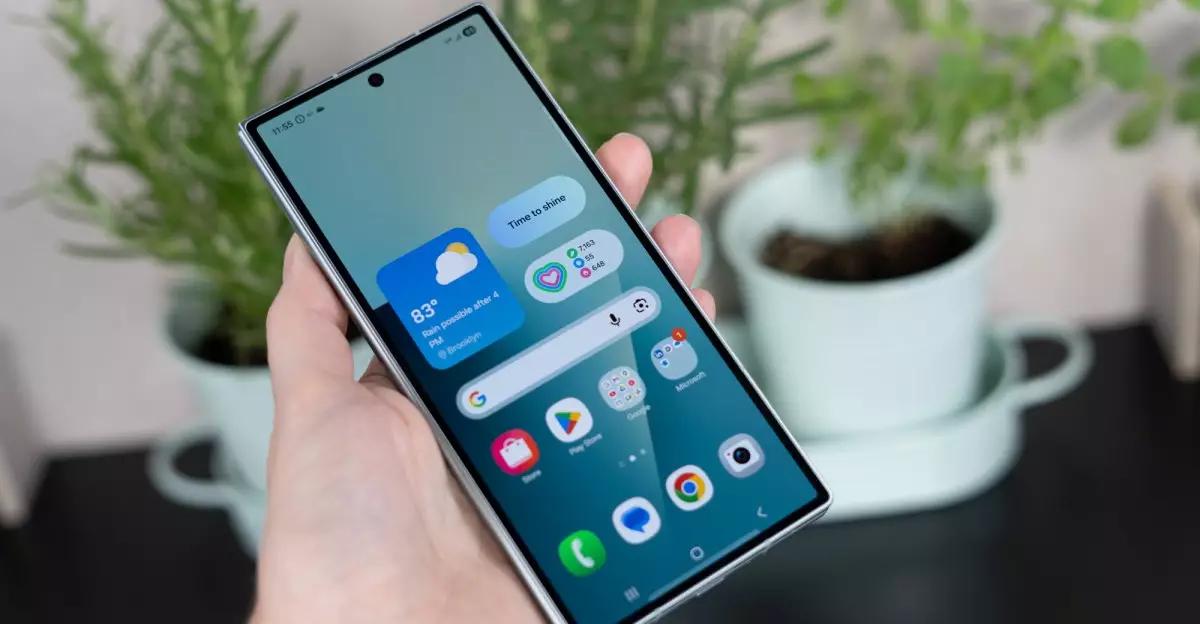The Samsung Galaxy Z Fold 7 represents a significant leap in foldable smartphone technology, combining sleek design with cutting-edge features. For years, foldables have promised a new era of mobile computing—merging the portability of a phone with the expansive screen real estate of a tablet. The Z Fold 7 not only delivers on this promise but redefines it with its thinnest profile yet, measuring just 8.9mm when folded. This reduction in thickness isn’t just a cosmetic upgrade; it impacts how users perceive and interact with their devices daily. It feels less bulky, more natural, and seamlessly integrates into daily life. The slightly larger external display, growing from 6.3 to 6.5 inches, further blurs the line between a traditional phone and a cutting-edge foldable device, providing an experience that is more accessible and less intimidating for newcomers to foldables.
While performance may not skyrocket compared to the previous generation, the improvements in design and usability make the Z Fold 7 a compelling choice for those who value elegance and convenience. It signifies Samsung’s commitment to perfecting foldable tech—not just in capabilities but in form factor. And though the device is undeniably premium, priced at a hefty $1,999, this sticker price signals the level of technological craftsmanship that has gone into making it a true flagship device. It’s a device that, more than anything, is about setting a new standard for what smartphones can be.
Strategic Deals and Trade-in Offers: Making the Impossible Possible
The biggest obstacle standing between consumers and the Galaxy Z Fold 7 is its initial price tag—an almost exorbitant figure for most. However, Samsung and carriers recognize that accessibility can be improved through aggressive trade-in deals and promotional offers. The trade-in options are especially enticing, capable of slashing the effective price by up to 50%. Samsung’s instant credit system, which evaluates and applies discounts based on current trade-ins like the Galaxy Z Fold 6 or S25 Ultra, effectively halves the out-of-pocket cost. While this is a significant discount, it raises questions about the device’s affordability for the average consumer, especially when the final price still hovers near $1,000 even with reductions.
Carrier deals seem more aggressive, offering up to $1,100 in trade-in credits payable over 36 months. AT&T and Verizon’s promotions, for example, provide substantial savings but require qualified trade-ins and specific plans. These installment-based credits might seem attractive initially, but they tether consumers to long-term commitments. Such practices, while financially advantageous for carriers, tend to obfuscate the true total cost of ownership, subtly encouraging buyers to upgrade or switch plans regularly. T-Mobile pushes an even more straightforward incentive by offering the same credit without requiring any trade-in, but only if customers commit to high-tier plans with auto-pay—an arrangement that may not suit everyone.
The inclusion of promotional Samsung credits for accessories acts as a clever pivot—offering consumers the opportunity to enhance their experience with earbuds, watches, or cases that complement the device. Yet, these perks often come with strings attached, such as time-limited use or exclusivity to Samsung’s online storefront. The rush to pre-order before July 24th introduces a sense of urgency, but it also lays bare a challenging market where affordability remains a significant hurdle.
Balancing Cutting-Edge Tech with Price Realities
The reality of the Galaxy Z Fold 7’s market positioning reveals a device that is as much a status symbol as it is a technological marvel. Its innovative design and advanced features make it a desirable gadget for early adopters and tech enthusiasts willing to pay a premium. But the price point signals a crucial truth: foldables are still luxury items, not mainstream phones. The sizeable storage options, such as the 512GB variant, come with added costs but also reflect the device’s high-end orientation.
Retailers like Best Buy and Amazon offer the possibility of substantial savings by purchasing the 512GB model at $1,899.99—almost $100 less than Samsung’s direct price—highlighting the importance of shopping around for value. Still, the reality remains—this isn’t a device for everyone. It’s targeted at a niche demographic that values innovation, design, and the prestige associated with owning the latest foldable tech. However, for those who can find the funds—or leverage strategic deals—the Z Fold 7 offers a glimpse into the future of smartphones: portable, flexible, and undeniably forward-thinking.
In essence, the Galaxy Z Fold 7 embodies Samsung’s bold vision for mobile technology, reflecting a blend of artistic craftsmanship and engineering prowess. The ongoing promotions and trade-in offers serve as an acknowledgment that while the device is a technological masterpiece, making it accessible requires strategic incentives. As the foldable market evolves, the Z Fold 7 stands out not just as a premium device but as a symbol of one’s willingness to embrace future innovations today.

